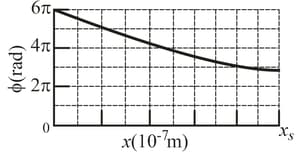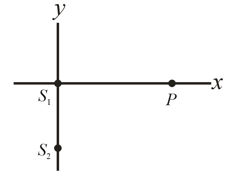Michelson's Interferometer
Important Questions on Michelson's Interferometer
In the figure, two isotropic point sources and emit identical light waves in phase at wavelength . The sources lie at separation on the -axis and a light detector is moved in a circle of large radius around the midpoint between them. It detects points of zero intensity including two on the -axis, one of them to the left of the sources and the other to the right of the sources. What is the value of ?

In the figure, two radio-frequency point sources and , separated by distance, , are radiating in phase with . A detector moves in a large circular path around the two sources in a plane containing them. How many (a) maxima and (b) minima does it detect?

The figure shows two isotropic point sources of light and that emit in phase at wavelength and at the same amplitude. A detection point is shown on the -axis that extends through source . The phase difference between the light arriving at point from the two sources to be measured as is moved along the -axis from to . The results out to are given in figure on the way out to . What is the greatest value of at which the light arriving at from is exactly out of phase with the light arriving at from ?

In the figure, two isotropic point sources of light and are separated by distance along the -axis and emit in phase at wavelength and at the same amplitude. A light detector is located at point at coordinate on the -axis. What is (a) the greatest value of and (b) the second greatest value at which the detected light is minimum due to destructive interference?


